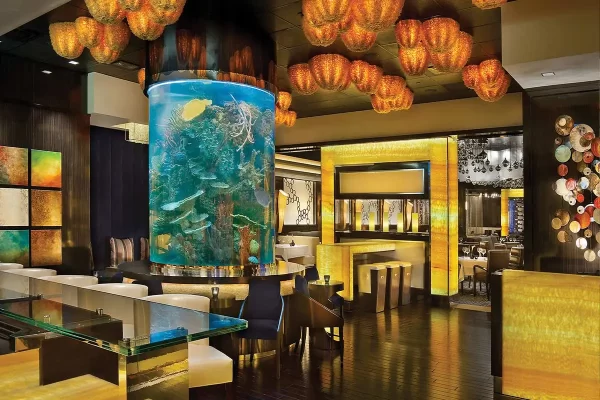Hello class! Today’s lesson is about exhibiting etiquette and how to conduct oneself properly at tradeshows. So today, your TradeShow Teacher is putting on her Emily Post hat while you should all be wearing your thinking caps.
Just as there is a right and wrong way of conducting oneself in almost all walks of life, there is proper etiquette that should be followed at tradeshows to make the right impression on attendees and prospective clients. After all, first impressions are often lasting ones. Everything from event attire to proper acknowledgement of those who’ve been of particular assistance is susceptible to scrutiny and it is always paramount to remember that you are not only representing yourself but rather your company at large.
Think like an owner
A rule of thumb that always comes in handy when approaching anything business related is to think as if you are the owner of the company. That ‘when-in-doubt’ philosophy can generally veer any exhibitor in the right direction in regards to anything tradeshow related, from deciding whether or not to wear a tie to how many cocktails are acceptable at a networking function to how the chairs at the booth are arranged.
What to wear: Cater to your audience
Clearly a computer-gaming tradeshow will have a different dress code than one targeting corporate attorneys, but in either case, you should be dressing for your audience. It is important for tradeshow and marketing managers to strike the right balance between coming across accessible yet professional. For instance, in the technology industry, the general dress code is fairly relaxed, but the enterprise sales teams feel the need for suits. A versatile concept involves wearing something that can easily go from casual to more formal, such as cotton-blend, wrinkle-free, button-down logo shirts with khakis or nice (no holes) jeans that can be dressed up as need be by simply adding a jacket or blazer. Another alternative is for booth staff to wear polo-style logo shirts in a color matching the ties of on-hand sales executives.
A general guideline is that attendees should be able to easily identify and discern exhibitors. Whether donning bright yellow logo t-shirts or the same color ties and dress shirts again depends on the show and its audience. In addition to helping with visual identification, a common color scheme creates a corporate identity so be sure that dress choices are consistent with your messaging. If you are trying to portray your business as hip and cool, your booth attire has clear requirements and if you are trying to market conservative investment mutual funds, leave the Harley jacket at home.
Shoes for booth staff should also match in color but comfort should be of chief concern.
Networking and other functions
Networking and other off-the-tradeshow-floor events are usually a step up from exhibition attire often calling for ‘business casual.’ High-quality logo wear is acceptable. You want to represent the company without looking cheap, sloppy or underdressed, so beware of inexpensive logo wear. You get what you pay for!
Occasionally, there are opportunities to break away a bit from that corporate image at ‘theme’ networking events where the dress code follows suit. Examples of such themed functions are beach parties or Hawaiian luaus. Read the schedule of events in your tradeshow kit closely so you can pack that tacky tropical shirt.
If presenting a seminar or educational session, a business suit is customary while awards banquets and galas generally mandate more formal cocktail attire. Looking back to photo galleries of prior years on the show’s website is always a good point of reference.
Avoid the lampshade look
Tradeshows are widely recognized for their festive atmosphere. Exhibitors work hard all day and some often party equally hard come nightfall. It is advisable to keep the cocktails to a mere two or three as you do not want all your hard work to be in vain as a result of an intoxicated faux pas or indiscretion.
Plus you’ll want to be well rested and fresh for the following day of exhibiting or travel. Let loose and enjoy yourself, but remain professional and keep in mind the job at hand.
Tattoos and piercings
Unless at a body art convention or alike, tattoos should be covered and non-traditional piercings should be obscured while exhibiting at tradeshows. Individuality should be celebrated but not at tradeshows where a corporate and cohesive image reigns. This school of thought should be applied to anything out of the ordinary such as excessive make-up, jewelry and accessories, hair color and akin. It is your company that should get center stage at a tradeshow, not any one representative.
The gift of giving
Bearing gifts makes you popular, but often giveaways are costly having negative impact on ROI. However, strictly from an etiquette perspective, gifts should be non-offensive, politically correct, or at minimum, socially acceptable. Humorous gifts often are effective in leaving an impression, but be sure your audience shares your sense of humor.
Logo bottled water and pens remain safe yet highly coveted items. Apply the same thinking regarding logo wear to pens – you get what you pay for and everyone hates (and remembers) cheap pens.
Aside from legal restrictions such as gifts to government employees, there are no strict parameters on who should or shouldn’t be gifted. It all depends on the size of show, budget and of course, your primary objective.
Attitude of gratitude
It is always a good idea to show appreciation to anyone who contributed to your show’s success. Although customers and prospects are a big part, be sure to not overlook unsung heroes; anyone from the show producer to a truck driver who might warrant a ‘thanks’ for a job well done or for going above and beyond. Keep in mind you might very well need their help again next time around. The current tradeshow trend in bidding gratitude is gift cards ($5-$25) to coffee shops, restaurants and such. A ‘thank you’ almost always has huge ROI.
Homework
- Closely review the exhibitor prospectus to familiarize yourself with your audience.
- Coordinate exhibiting attire according to your audience, the industry and your corporate color scheme and messaging.
- Examine show’s schedule of events to insure you have proper attire for all functions.
- Order high-quality logo wear and promotional giveaways in advance.
- Purchase gift cards as ‘thank yous’ to those who contributed to show’s success.
Linda Musgrove is founder and President of TradeShow Teacher, a full-service trade show training and management firm. Through her result-driven formula, she specializes in teaching companies to significantly improve trade show results through strategic, customized trade show management and training for individuals, departments or entire teams. Training options include phone consulting, webinars, seminars and one-on-one in person coaching. Musgrove authored “The Complete Idiots Guide to Trade Shows,” published by Alpha Books/Penguin Publishing. Learn more at http://www.tsteacher.com and follow on Twitter at: http://twitter.com/tsteacher





























